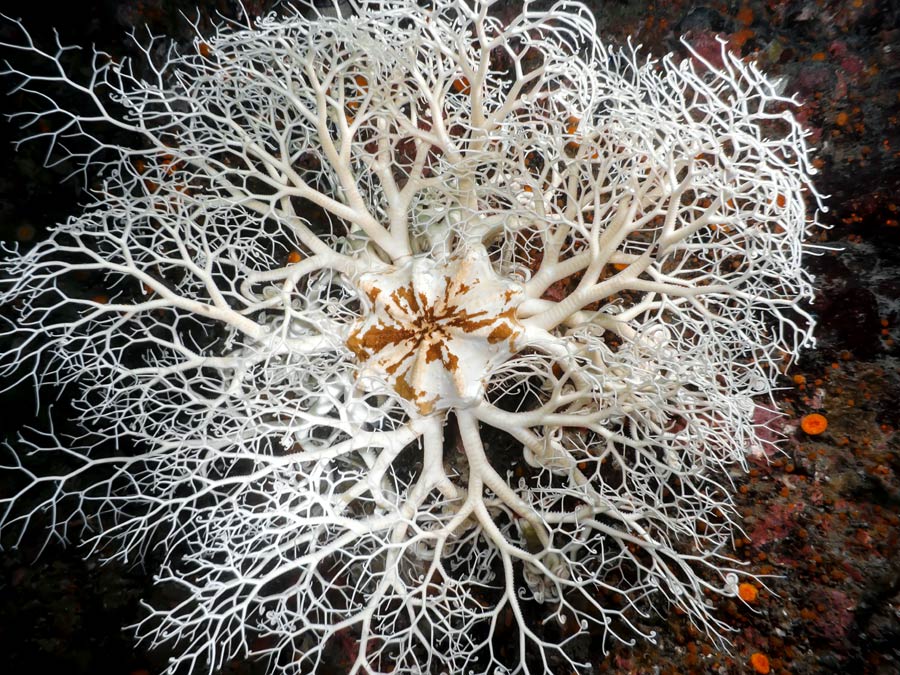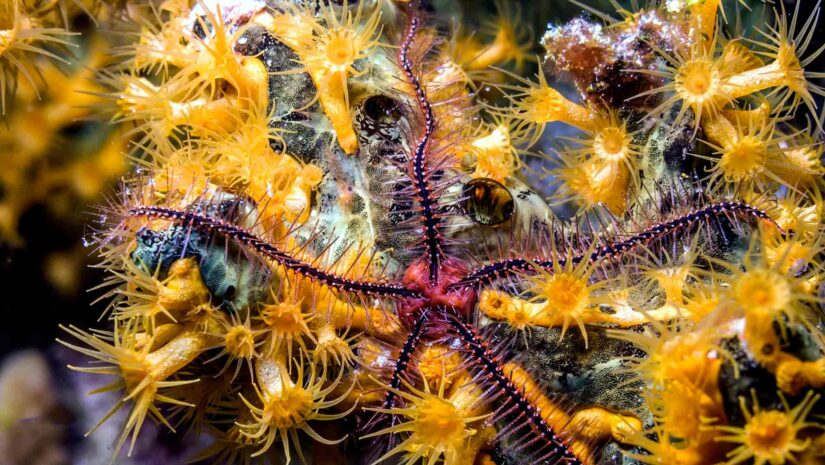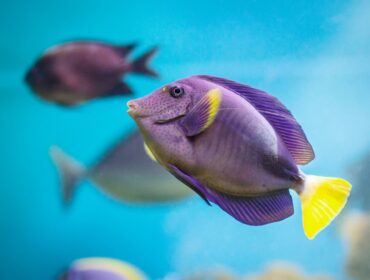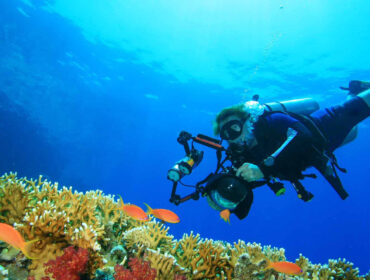The ubiquitous starfish is perhaps one of the earliest marine animals we learn about as children. Its iconic star shape is easily identifiable and always interesting to observe on rocks, in tide pools, and below the surface of the sea. But the variety of stars that can be found in the sea extends well beyond our common five-limbed friends.
Brittle stars are among the best sights to marvel at when you’re exploring the open waters. In 1818, Sir John Ross chanced upon a brittle star at Baffin Bay off Greenland, making brittle stars the first deep-sea creature ever to be discovered. With their strangely elegant movements and unique appearance, they give young divers and old salts a great reason to keep answering the call of the sea.
Brittle Star Facts
Brittle stars belong to the taxonomic class Ophiuroidea under the phylum Echinodermata. There are two large clades: Ophiurida (brittle star) and Euryalida (basket star). These close relatives of sea stars (commonly called starfish) are marine invertebrates that usually dwell in deep waters at depths of at least 500 meters below sea level. They can, however, also be spotted in low-tide areas and reef communities, hiding themselves deep within the corals or under rocks.
While they offer little commercial value, they are still prized for their role in the Arctic food web, as well as their aesthetic appeal. Their delicately designed bodies and movements have made brittle stars popular in aquariums as well.
Physical Appearance

Brittle stars are characterized by five long, slender limbs fixed onto a central body disk (a phenomenon known as pentaradial symmetry). A species can develop arms that are almost eight inches in length (20 cm) and a disk that is about an inch (2.5 cm) in diameter. Although they do not usually grow very large in size, they can easily be spotted thanks to the fine spines covering their entire body, giving them a rather hairy appearance.

The more ornate brittle star class is Euryalida. These echinoderms have 10 arms on their disks (also known as tetraradial symmetry) with each limb progressively branching into smaller, more delicate tendrils. They are also significantly bigger than average brittle sea stars, having central disks that grow up to 14 inches (35.56 cm) in diameter and arms that can measure up to 27.55 inches (70 cm) in length.
There are over 2000 known species of brittle stars and basket stars today, coming in varying sizes and colors. Some species may even be capable of phosphorescence or the emission of light without perceptible heat, making them truly captivating creatures.
Locomotion
The class name of brittle stars derives from the Greek word ófis, meaning “snake”. True to its etymology, they are best known for their elegant and hauntingly beautiful motions courtesy of their snake-like arms. When moving about the seafloor and in between corals, brittle sea stars wiggle their limbs to propel them forward, prompting some divers to remember them as “serpent stars”.
In comparison to starfishes, brittle stars do not rely on tube feet for their locomotion. They can walk and swim freely and quite swiftly with their flexible arms.
Check out this video of a swimming brittle star:
As well as this video of a crawling brittle star:
Feeding
Depending on the species, brittle sea stars can acquire food through active predation or filter-feeding. Being omnivores (mainly detritivores), a brittle star diet is composed of decaying plant matter, plankton, krill, and small fish. Serpent stars use their arms to get a good hold of their food before pushing their stomachs through their mouths to consume their prey. Consumption, digestion, and excretion all happen in one opening, as Ophiuroids do not have an anus.
Check out this video of a brittle star feeding:
Brittle Star Reproduction
Like common starfish, Ophiuroids can regenerate limbs that were willfully shed or otherwise severed. This is an important characteristic in some species, who reproduce asexually by splitting their bodies to become two individuals. Brittle stars and basket stars can also reproduce sexually through spawning and brooding. The former involves male and female brittle stars releasing sperm and eggs into the water, while the latter requires fertilization inside a female serpent star’s body.
Where Can You Find Brittle Stars?

If you’re interested in seeing a variety of brittle sea stars in person, plan your trips along the Indo-Pacific region where over 800 species thrive. The Western Atlantic ocean comes second with over 300 species of eye-catching brittle stars and basket stars. Many Ophiuroids can be found in the bottom of the ocean, usually buried in mud or hiding between rocks and corals. If you’re a veteran diver, you can even find them at hydrothermal vents deep underwater.
The truth is, brittle stars can be found almost anywhere—even in the Arctic and Antarctic regions. Some species could also dwell in subtidal zones, making them easily accessible to anyone who has an eye for them. Wherever they are, it’s likely that you’ll see them in large numbers as they tend to live in dense concentration.





